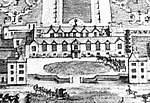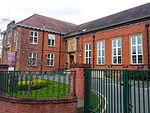Wanstead Park

Wanstead Park is a municipal park covering an area of about 140 acres (57 hectares), in Wanstead, in the London Borough of Redbridge. It is also a district of the London Borough of Redbridge, which was in Essex until 1965. It is administered as part of Epping Forest by the City of London Corporation, having been purchased by the Corporation in 1880 from Henry Wellesley, 1st Earl Cowley. Today's park once formed part of the deer park of the former manor house of ancient Wanstead Manor, which included much of the urbanised area now known as Wanstead. The present park retains some of the layout of its former existence as Wanstead House's grounds, though the park's western boundary lies some 330 yards east of the house's site. In 1992 a Management Plan was initiated to try to re-establish something of the formality of the grounds of a "Great House". The park is Grade II* listed on the Register of Historic Parks and Gardens.
Excerpt from the Wikipedia article Wanstead Park (License: CC BY-SA 3.0, Authors, Images).Wanstead Park
Northumberland Avenue, London Redbridge (London Borough of Redbridge)
Geographical coordinates (GPS) Address Nearby Places Show on map
Geographical coordinates (GPS)
| Latitude | Longitude |
|---|---|
| N 51.5676 ° | E 0.0403 ° |
Address
Northumberland Avenue
E12 5EZ London, Redbridge (London Borough of Redbridge)
England, United Kingdom
Open on Google Maps









